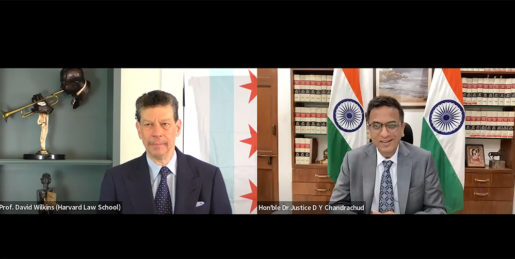On March 24, 2022, the Center on the Legal Profession (CLP) and the Harvard Law School Project on Disability (HPOD) collaborated on a webinar, “Global Disability Cause Lawyering: Perspectives from Leading Lawyers in the Movement.” There, we invited leading scholars and practitioners from around the world to discuss the increasingly global movement toward inclusion and accessibility. It has been over a decade since the passage of the United Nations Convention on the Rights of Persons with Disabilities (CRPD) and over two decades since the passage of the Americans with Disabilities Act (ADA). Significantly, it has also been a decade since HPOD faculty director Michael Ashley Stein and CLP faculty director David Wilkins co-authored, along with Professor Michael Waterstone, a critical piece of scholarship, “Disability Cause Lawyers,” focusing on the “daily practice, motivation, and self-awareness” of a growing group of lawyers within the United States tackling disability civil rights cases. As Wilkins, Stein, and Waterstone write in the conclusion of their article: “Scholarship on cause lawyering has a key insight: lawyers matter. … The strategic decisions lawyers make, their relationships with their clients, and their interactions with each other all impact the success of a social justice movement’s march toward progressive change.”
It is from this context that we expand the field of view, taking stock of how lawyers operate in a globalized world. What are the tools and methods disability cause lawyers bring to achieve their strategic aims? How do these tools and methods work in different jurisdictions? To offer an initial perspective, Stein, an architect of the CRPD and one of the foremost scholars on disability rights, along with Matthew “Hezzy” Smith, director of advocacy initiatives at HPOD, introduce this issue, with their own reflections on what lessons U.S.-based disability cause lawyering might provide for the wider ecosystem. As they note, it is worth taking stock of the current state of play—since the passage of the CRPD, “cause lawyers have a broader array of venues to ply their craft, be it within intergovernmental agencies, before international adjudicators, or in sync with transnational advocates.”
What are the tools and methods disability cause lawyers bring to achieve their strategic aims?
What is the global disability cause lawyers’ movement? To help gain perspective more generally, we present a series of case studies from Chile, Europe, India, and Kenya. In her case study on Chile, UN Special Envoy on Disability and Accessibility Marìa Soledad Cisternas Reyes stresses that the work is not finished when the trial is finished—and that impact litigation must be complemented by policy change and awareness raising. János Fiala-Butora, a lecturer in international disability law at National University of Ireland Galway, draws on experiences within the EU with special reference to Bulgaria, emphasizing how lawyers have to balance the goals of individual clients with those of the movement. NLSIU professor Sanjay Jain charts the unique landscape in India, where judicial activism plays a major role in advancing disability rights. And Elizabeth Kamundia, deputy director of the disability rights division at Human Rights Watch and formerly assistant director of the Kenya National Commission on Human Rights, highlights the importance on including those with lived experiences in advocacy.
In addition to these case studies, the issue shines a light on how a 20-person, Baltimore-based law firm emerged as a leading disability rights advocacy group in the United States. Founded more than 30 years ago by Dan Goldstein and partners, few would have predicted that the litigation-focused boutique would become the disability rights-focused firm that it is today. Part of their success has been deferring completely and fully to their most prominent client: the National Federation of the Blind. As Goldstein advises to those seeking to enter the field, the first step is to “listen. And then, listen some more.”
The issue concludes with a Speaker’s Corner with Janet Lord, a senior adjunct professor of law at the University of Maryland and a senior fellow at HPOD, who offers insight into what it means to organize on a global and systemic level. In addition to working on CRPD negotiation and implementation, Lord has been instrumental in pushing for more disability rights work in education, helping to ensure that mainstream legal texts take an intersectional lens that includes disability. As she says, “Because disability, like gender, is a crosscutting issue, there are opportunities to see those issues integrated into all dimensions of the law.”
As Stein and Smith say in their framing piece, “Ongoing debates about key global disability rights movement goals, to say nothing over differing views about the appropriate means and moments for achieving them,” continue to complicate the task of the disability cause lawyer.



